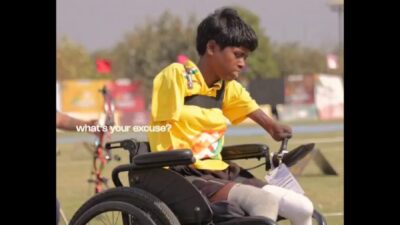As the world prepares for the largest and most ambitious FIFA World Cup yet, with the 2026 edition sprawling across the United States, Canada, and Mexico, concerns about weather—particularly extreme heat—are intensifying. FIFA President Gianni Infantino, responding to mounting criticism and player safety concerns, announced that stadiums equipped with roofs will play a key role in mitigating extreme weather conditions during next year’s tournament.

As-the-world-prepares for-the-largest-and-most-ambitious-FIFA-World-Cup-yet-with-the-2026-edition-sprawling-across-the-United-States-Canada-and-Mexico-concerns-about-weather-particularly-extreme-heat-are intensifying
Speaking at FIFA’s new headquarters in New York, Infantino said, “Of course, the heat is an issue. Last year at the Olympic Games in Paris, games during the day across all sports occurred in very hot conditions. Cooling breaks are very important and we will see what we can do. But we have stadiums with roofs, and we will definitely use these stadiums during the day next year.”
However, this announcement has sparked more questions than it has answered—primarily, whether the proposed infrastructural fixes are sufficient or even viable in the face of increasingly hostile weather patterns in North America.
The Heat Is On: A Warning from the Club World Cup
The alarm bells were already ringing during the 2025 Club World Cup, where players, coaches, and officials vocally expressed their concerns about playing in extreme heat. In some cases, games were nearly unplayable under punishing temperatures, and the trend seems poised to intensify next summer. With temperatures in parts of the U.S. crossing 100°F (37.8°C) regularly in June and July, the risks are real and escalating.
Professional athletes in other sports are also showing signs of strain. Just two weeks ago, baseball players Elly De La Cruz of the Cincinnati Reds and Trent Thornton of the Seattle Mariners both fell ill due to heat-related issues. De La Cruz even vomited on the field during a game, prompting renewed concerns across professional leagues.
This comes amid increasing incidents of the so-called “heat dome” phenomenon—a weather pattern where a high-pressure system traps heat over an area, pushing temperatures and humidity to dangerous levels.
Stadiums with Roofs: A Partial Solution?
Infantino’s proposed remedy hinges largely on the use of stadiums equipped with retractable roofs. But there’s a major catch: only four of the planned U.S.-based stadiums have such roofs, and they’re all primarily designed for NFL games played in winter. These facilities are intended to retain heat, not repel it.

Infantino’s-proposed-remedy-hinges-largely-on-the-use-of-stadiums-equipped-with-retractable-roofs
Unlike the custom-built air-conditioned stadiums in Qatar for the 2022 World Cup, many of these American stadiums were not constructed with extreme summer heat in mind. Moreover, in some cases, natural grass will be layered on top of artificial turf for the World Cup, a practice that requires heavy watering. The combination of closed roofs and excess moisture could ironically increase humidity levels inside the stadium, turning them into sweltering greenhouses unless substantial cooling systems are installed.
At present, only a few of these venues offer fully enclosed and climate-controlled environments. Whether they can be retrofitted or upgraded in time for the World Cup is uncertain, especially considering that such large-scale modifications could require months of planning, significant investment, and approvals across multiple jurisdictions.
FIFPRO and Climatologists Sound the Alarm
The world players’ union, FIFPRO, which represents 65,000 professional footballers globally, has been vocal about its dissatisfaction with FIFA’s handling of heat-related risks. In a recent conference call discussing the Club World Cup, Alexander Bielefeld, FIFPRO’s director of policy and strategic relations, stated: “We clearly believe that from a health and safety perspective, this [extreme heat] is something that must take priority over commercial interests with regards to the safety of the players.”

FIFPRO-which-represents-65,000-professional-footballers-globally-has-been-vocal-about-its-dissatisfaction-with-FIFA’s-handling-of-heat-related-risks
Bielefeld and others argue that extreme heat is no longer an unpredictable anomaly but a foreseeable condition that should be proactively managed. FIFPRO has urged FIFA to revise the temperature thresholds at which it mandates cooling breaks or suspends matches. Specifically, they recommend lowering the mandatory cooling break threshold to 78.8°F (26°C) on the Wet Bulb Globe Temperature (WBGT) scale, and halting matches once it reaches 82.4°F (28°C).
The WBGT is considered more reliable than standard temperature readings because it factors in humidity, solar radiation, and wind—crucial elements when evaluating heat stress on athletes.
Christopher Tyler, an environmental physiologist at the University of Roehampton, told The Athletic that FIFA’s current threshold of 89.6°F (32°C) is much higher than that used in many other sports. “FIFA would argue that it works because they haven’t seen enough medical complications at that temperature or above. But the argument against that is that players are probably slowing down and changing how they’re playing, so they’re not getting ill,” Tyler said. “Eventually, it will compromise the quality of the game.”
Beyond Roofs: Other Mitigation Measures
Infantino’s announcement also hints at other adaptive measures, such as increasing the frequency of cooling breaks and potentially adjusting kick-off times to early mornings or late evenings. But even these steps pose logistical complications.
Rescheduling matches could conflict with prime-time television slots in Europe and Asia—markets critical to FIFA’s commercial revenue. Broadcasters and sponsors are unlikely to relinquish high-value time slots easily, setting up a potential clash between player welfare and financial interests.

Rescheduling-matches-could-conflict-with-prime-time-television-slots-in-Europe-and-Asia-markets-critical-to-FIFA’s-commercial-revenue
There’s also talk of localized contingency planning, including distributing ice vests to substitutes, installing mist fans on sidelines, and building more shaded zones for media and officials. But such fixes, while welcome, are temporary band-aids for what many experts warn is a long-term systemic issue in scheduling international sports events.
The Larger Climate Context
The broader reality is that climate change is no longer a future concern—it is an active disruptor of sporting events globally. The 2026 World Cup, intended to be a celebration of football on an unprecedented scale, now finds itself at the intersection of global warming, urban planning, and athlete safety.

The-2026-World-Cup-intended-to-be a-celebration-of-football-on-an-unprecedented-scale
FIFA’s decision to host a summer tournament across some of the hottest regions of the U.S. has placed the governing body under scrutiny. Even Infantino’s promises, while well-intentioned, may not fully address the evolving environmental risks posed by a rapidly warming world.
With over 100 matches scheduled in the U.S. alone—across cities like Dallas, Houston, and Atlanta, all notorious for summer heat—the urgency to implement comprehensive, science-backed heat mitigation strategies is not optional. It’s essential.
Conclusion
While Infantino’s commitment to using roofed stadiums represents a step in the right direction, the promise rings hollow without a coordinated, multi-layered strategy to protect players, staff, and fans. Retractable roofs may shield spectators from direct sunlight, but without adequate climate control systems, they risk becoming heat traps instead of safe havens.
The road to 2026 must include infrastructural upgrades, revised safety protocols, and—perhaps most importantly—a willingness from FIFA to prioritize health over broadcasting dollars. Otherwise, the spectacle of the World Cup could be overshadowed by an avoidable health crisis in the searing summer heat of North America.
https://www.youtube.com/watch?v=NYI4ZaY-q8Y
Click here to watch more!



















Comments